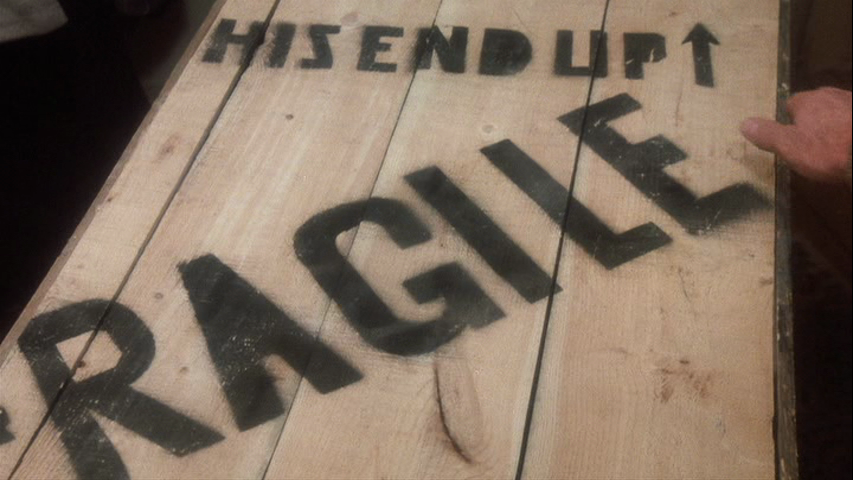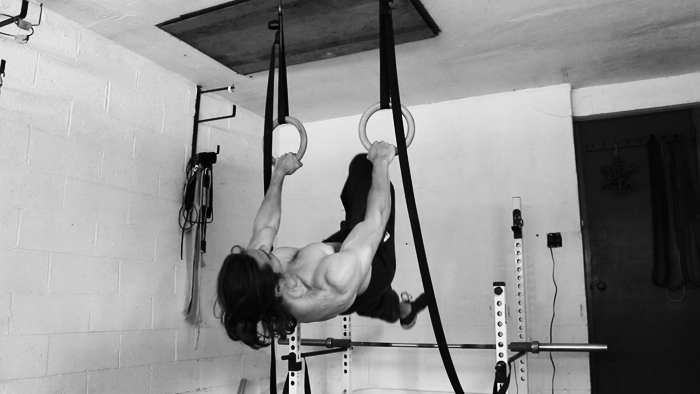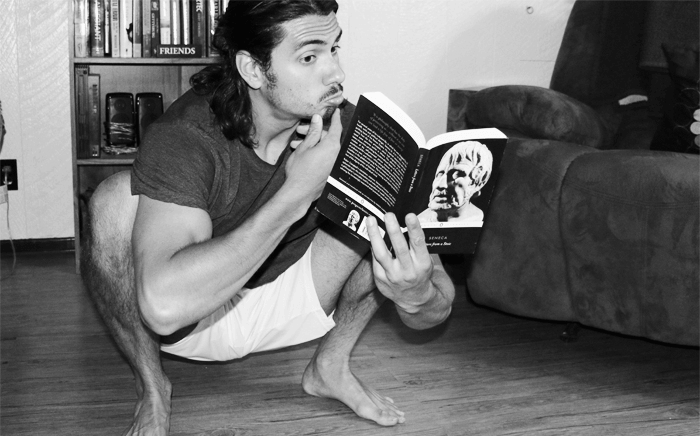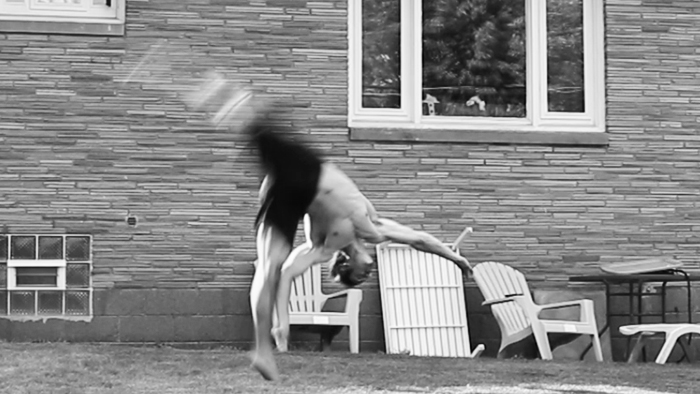Born with a power level of two, Goku was an anomaly of the typically strong Saiyan race. He was considered a weakling (especially compared to the likes of Broly, who had a 10,000 power level at birth), which is why he was sent to conquer the relatively weak inhabitants of planet Earth. With time, however, Goku [...]

Born with a power level of two, Goku was an anomaly of the typically strong Saiyan race. He was considered a weakling (especially compared to the likes of Broly, who had a 10,000 power level at birth), which is why he was sent to conquer the relatively weak inhabitants of planet Earth.
With time, however, Goku becomes one of the strongest fighters in the world. We learn, not long after, how Goku grows into a premier physical specimen: Saiyans get stronger after every battle. After being broken down, they build back up in a way that surpasses their former abilities.
Saiyans, when deprived of stress, weaken. Turns out, Saiyans aren’t much different than us. In order to get better, we have to embrace disorder and stress.
The three layers of stress impact
It’s widely accepted that the numero uno goal of the majority of living species is to pass their genetic code into future generations. You have to live long enough to do this, so built into human biology is capacity to survive, primarily by adapting to the stressors in the environment routinely faced — something known as epigenetics.
The specific stressors shape who you are. You need stressors in some quantity, even “bad” stressors!
Take three boxes, for example.
- Box one is labeled handle with care.
- Box two has no label.
- Box three is labeled please mishandle.
Box one is fragile. Disorder is harmful. You’re walking around the fine china store. Earthquakes, sudden trauma, and four year old children that can’t keep their hands to themselves are all bad news. It’s like being Damocles with a sword dangling above your head. Best case scenario: nothing happens, everything stays the same.
Box two is robust. Disorder is moot. It doesn’t help you, nor does it harm you. You’re in the shoe store now. Unlike the fine china store, the shoes can fall off the shelf without damages. It’s like being a phoenix. No matter what kind of disorder you face, you come back to your original form.
Box three is antifragile. Disorder is positive; without disorder, it’s weaker than it has the potential to be. The hydra is antifragile because when one head gets cut off, two grow back in its place. The hydra enjoys disorder because it comes back stronger.
This triforce of fragility, robustness, and antifragility (including the examples) is credited to Nassim Taleb and his book, Antifragile: Things That Gain From Disorder.
Why we need stress
One of Taleb’s primary points is that, traditionally, we have no conception of antifragility. We ship no boxes that say “please mishandle.” Most everything we’re familiar with is more along the lines of the major award in A Christmas Story and lumped into a thought bucket that says: all disorder = bad.

Treating an antifragile system like a fragile system has drawbacks. With antifragility, a lack of stressors weaken the system. Putting the fragile mindset — one that fears disorder — atop ourselves ends up making us weaker.
Consider that your body, at the very moment, is striving to maintain a semblance of stasis. Your temperature is around 98.6 degrees Fahrenheit. Your heart rate, and other common “health” markers, are all floating about a range of “good” that your body has decided on over time.
Most physical and mental upgrades come about from disrupting this range of good and forcing the body to adopt new norms. We aren’t fine china. When we shake ourselves, we make our system sturdier.
Antifragile in body
You might have heard this before: you don’t get stronger during training, you get stronger recovering from training. When you train, you’re breaking yourself down. You’re tearing down the energy stored within your muscles and putting it to use, you’re also damaging the muscle fibers themselves. You’re throwing your body out of stasis.

If the disorder isn’t too severe, your body rebuilds itself beyond the level at which it previously was built. It’s almost like the body says, “Wow. That was crazy. You know what? I’m going to rebuild just a little bit better than before just in case I need to deal with that stressor again.”
So when you lift 300 pounds and break yourself down doing so, your body doesn’t build back up to being able to lift 300 pounds again. That’s the phoenix. But we’re the hydra. Instead, we build back up to being able to lift 305 pounds. Then 310 pounds. And up and up and up over time. Muscle tissue is the same. You tack on more and more and more, so long as you continue to deliver the disorder.
Antifragile in brain
We are physically antifragile, largely unconsciously. Mentally, we have the potential to be antifragile, but it requires some consciousness reconfiguration, especially because we come from a microwave culture that instills a mindset of ease and speed.
Taleb has a stoic backbone in his thought and decision making processes, and stoicism is the route to an antifragile mind.

Modern stoicism appears as apathy more than anything else, but the root of real stoicism is all about learning how to face and deal with hardship in a way that isn’t totally destructive to your own being. In other words, stoicism is about robustness. You don’t want to be fragile; you don’t want to crack under stress.
“Choose not to be harmed and you won’t feel harmed. Don’t feel harmed and you haven’t been.”
-Marcus Aurelius
The layer atop this is learning from hardships and failures. Although failures might not clue you in on what you need to do, they have insight in that they tell you what not to do. And often times, finding out what not to do is more important than finding out what to do. Most successful people don’t really find out how to win, but rather how not to lose. There’s a difference between the two.
As Ryan Holiday explains in The Obstacle Is The Way, a chunk of Marcus Aurelius’s writings (considered one of the forefathers of stoicism) was “a formula for thriving not just in spite of whatever happens but because of it.” Being mentally antifragile is learning how to make negative experiences into positive ones.
Antifragile in skill
Not long ago, it was thought that people couldn’t get more skilled — if you weren’t born with it, you’d never have it. This idea is falling apart thanks to the likes of Daniel Coyle’s The Talent Code, Robert Greene’s Mastery, and Malcolm Gladwell’s Outliers. (For the alternative view and power of genes, I recommend The Sports Gene by David Epstein.)

From piano to pitching to tennis, we call these things skills. The adage we’ve been brainwashed into believing is that practice makes perfect. That’s only sort of true, because practice only makes perfect if you’re practicing perfectly. It’s more so that practice makes permanent — you need a certain kind of practice to make you better.
“The trick is to choose a goal just beyond your present abilities; to target the struggle. Thrashing blindly doesn’t help. Reaching does.”
As described in The Talent Code, this environment for practice is known as the sweet spot, and it’s about being in a zone just beyond your skill level. You need to make mistakes, but you also can’t be too far beyond your comfort zone.
Play it too safe and you don’t push the envelope enough to get better. Play it too hardcore — greatly try to train at a level beyond your capabilities — and you’re too out of your league to get better. Hence, “the sweet spot.” Not security, but also not suffocation.
Antifragility and nonlinearity
So far, we’ve deified the once vilified “disorder,” which is a component of stress. Although we’re antifragile, our ability to cope with stress is finite.
No, stress isn’t inherently bad. Stress is good. Some stress, at least. And more stress isn’t always better. This is the inverted-U at work. This is where most people begin to tremble, as it trashes black and white thinking.
Pathogens aren’t good. We get that. But if you only inject a little bit into your blood? You can make your body stronger by forcing a gradual and continual adaptation and immunity. At the same time, if you inject too much, well, you’re going to be ill.
There’s a range of good for body, brain, and skill.
- Train too much too soon, you’re looking at injuries and tendonitis.
- An abundance turns post-traumatic growth into post-traumatic stress disorder.
- Train beyond the sweet spot where you’re so far beyond correcting your mistakes, and you won’t get any better.
Antifragility is nonlinear, but that doesn’t mean it all ends up in a vat to avoid. What we’ve failed to do is respect the idea that the vast majority of bozo’s out there don’t know what they’re doing with their body.
You have people that are so far gone (in physical terms) that jump (literally) into P90X, where they’re hopping around and doing so called “plyometrics” without any preparation. You have couch potatoes that run marathons without any preparation.
These people buy the Bugatti and expect to drive it around like a pro, milking the labor without the love. This is a rant for another day because these are good people (usually) with good intentions (maybe) that end up destroying themselves because they have no idea of what it means to own and upgrade and maintain a fully capable exo.
The fugue of modern fitness
This is what it means to live in the fugue of modern fitness: you don’t know what you’re doing, but you know you should be doing something, so you do anything just to feel good about yourself.
The majority of things we perceive to be bad aren’t often absolutely bad, rather bad pending the structure they are applied to. Again, this is nonlinearity and the inverted-U.
Yes, rounding your back can be bad, just like a pathogen…if you inject too much at once. But in the long run it can also be good if you respect your body’s ability and slowly build. If you’re at ground zero and pretend to be the guy that’s been sticking himself with the pathogen for ten years, then you’re in the fitfugue.
Yes, “bad” things can be good. It depends on context, relativity, and other things I could italicize to show you that they are important and hold meaning to me that you probably don’t yet understand because they aren’t things I’ve been able to put into words quite yet.
Antifragility is not black and white; don’t make it binary.
The difference between two cups
Implications here are two fold:
- Those that don’t understand this end up making themselves more fragile, as the lack of stress weakens them.
- The type of stressor matters, because developing immunity to the chicken pox is different than immunity to measles.
Normally glass cups are fragile, but I want you to assume they are antifragile. One antigragile cup (II) is protected as if it were fragile. The other antifragile cup (III) gets dropped on concrete, pavement, thrown against a wall, etc. first from 10 feet, then 20 feet, then 30 feet.

The reason for the heights is because, initially, a 30 foot drop would break the cup. Being antifragile doesn’t mean being invincible.
These individual stressors take their bite out of III, but in the end they end up making III much better than II because III has adapted beyond specific stressors. These specific and general adaptations are another dimension of antifragility, and I liken it to gaining experience in an RPG. You can boost your overall EXP, but they you can also level up EXP for specific attributes like attack and defense. This dimension is deeper than necessary here, so I’ll save that for later.
Here, however, you see that III is much stronger than II, and much better off. You also see that II can’t copy the current “training” of III because III is simply on a different playing field.
You aren’t who you were yesterday
You’re facing stressors every day, and your body is working hard to adapt to these stressors every day to become the best organism it can be given the environment its in. In this sense, you are never the same person two days in a row.
Remember:
- Antifragile things gain from disorder
- Antifragililty is not infinite
- Antifragility is nonlinear
- Antifragility applies to muscle, myelin, and minds
And to conclude the conclusion, I’ll share a thought from The Talent Code that — for whatever reason — captured something within me, that also happens to embody antifragility: you’re a biological system, not a computer — you can construct yourself.
Perhaps the overwhelming question is, then: what are you telling yourself to construct?
+++++
Photo credit: glass cup